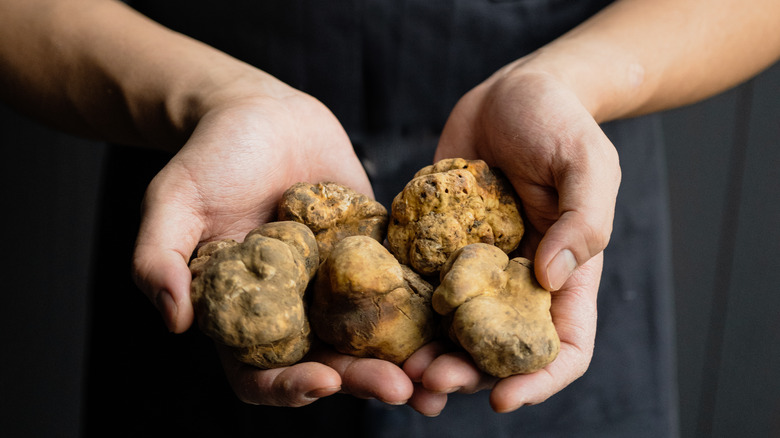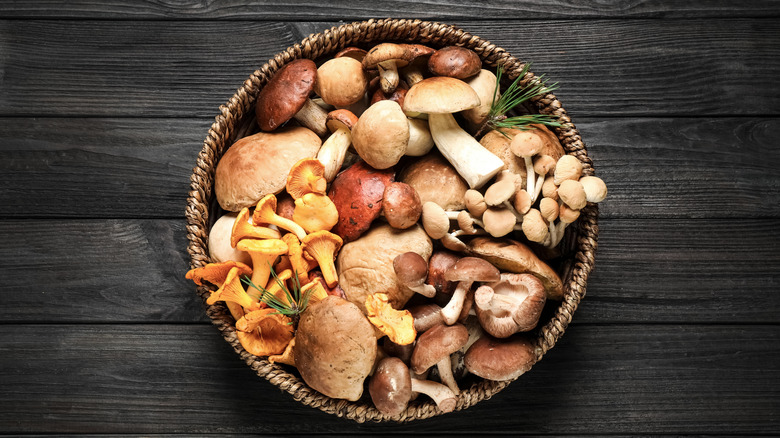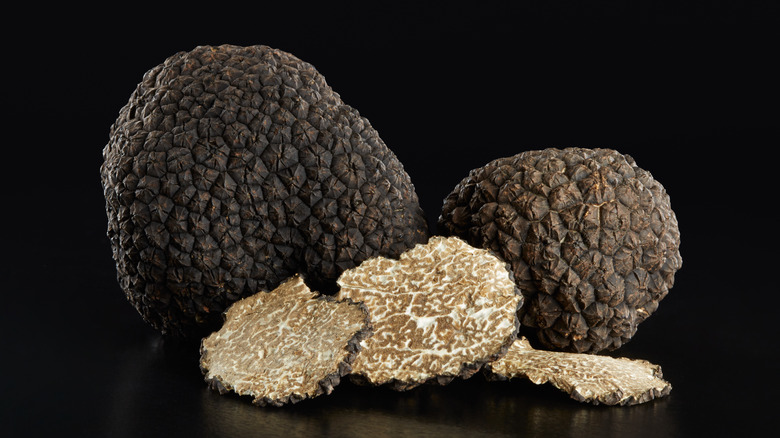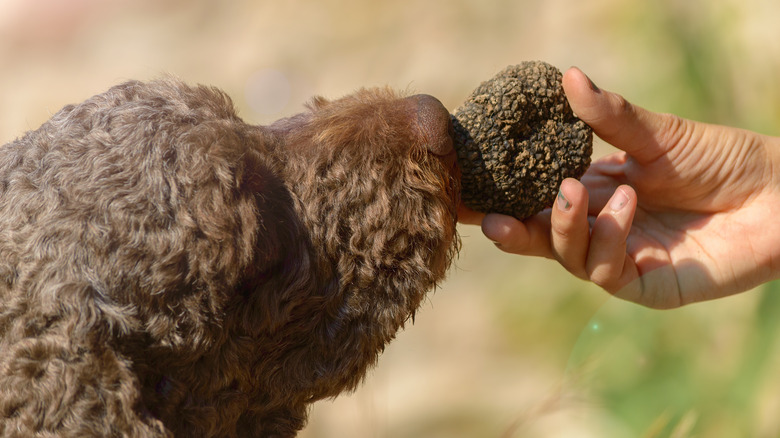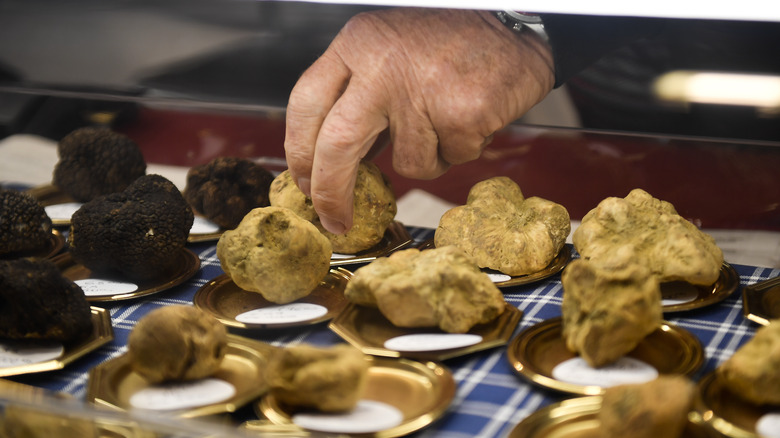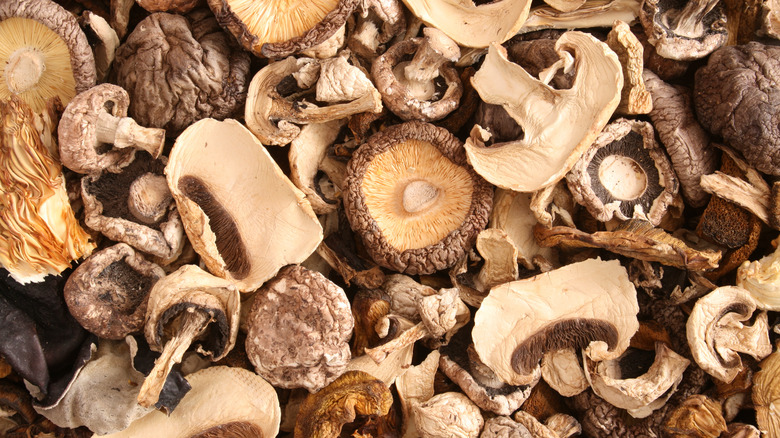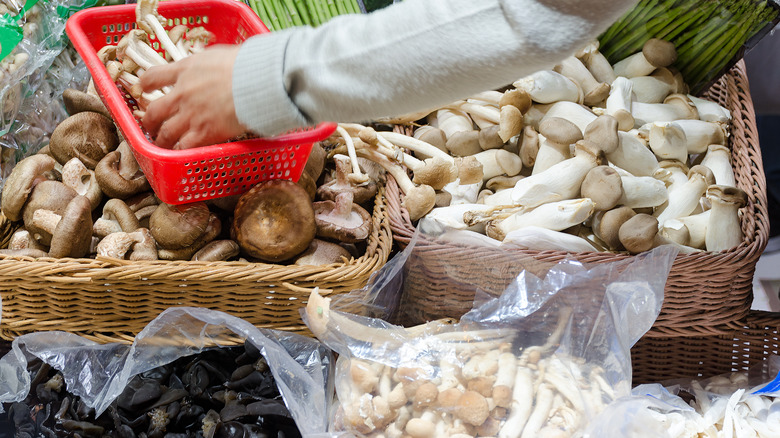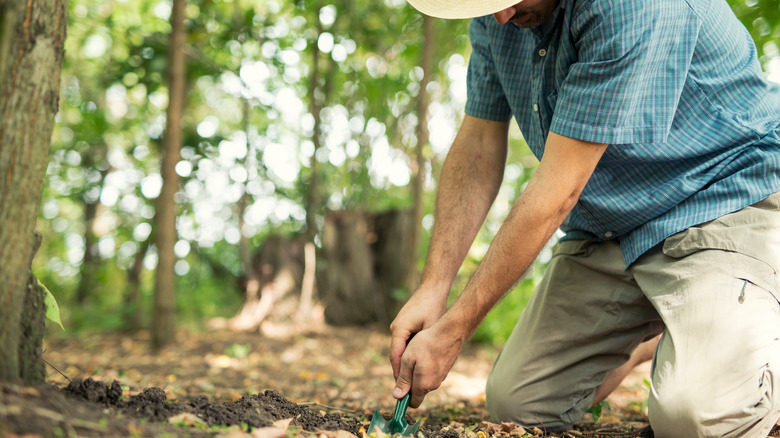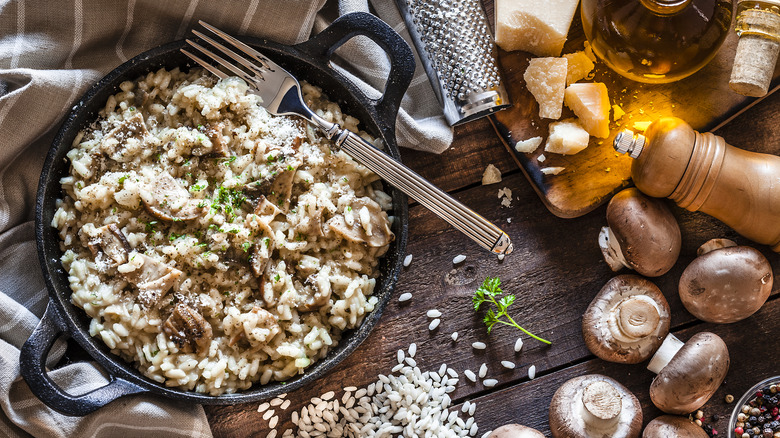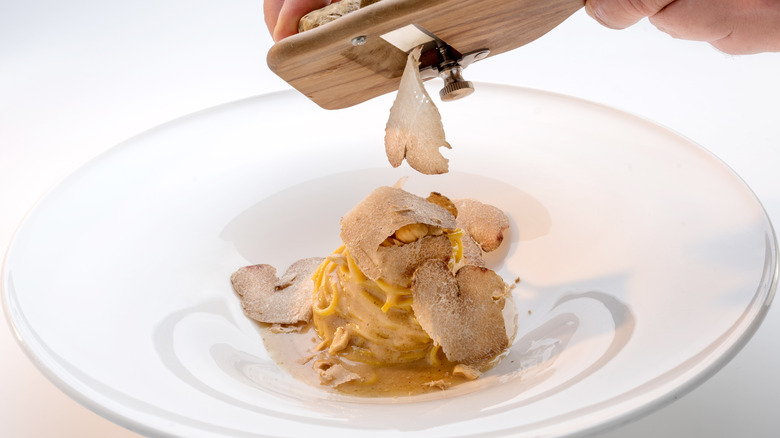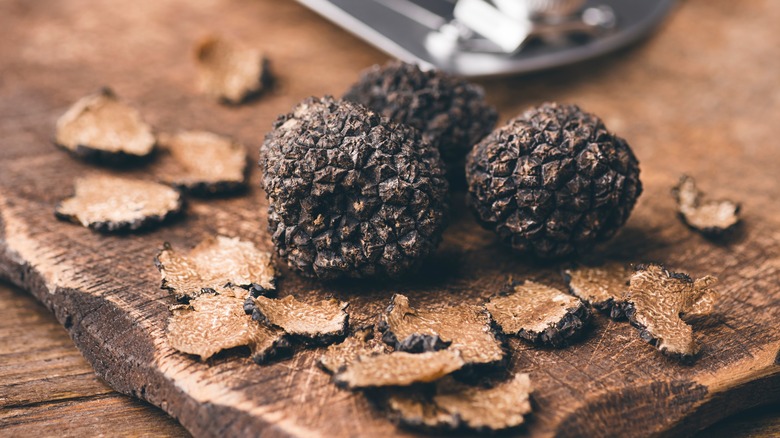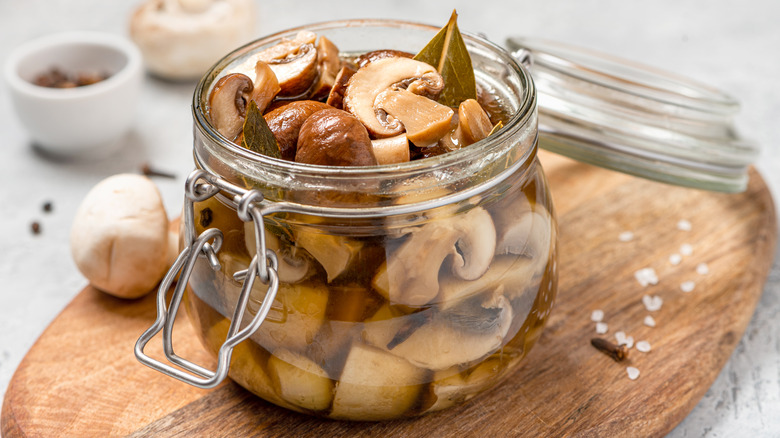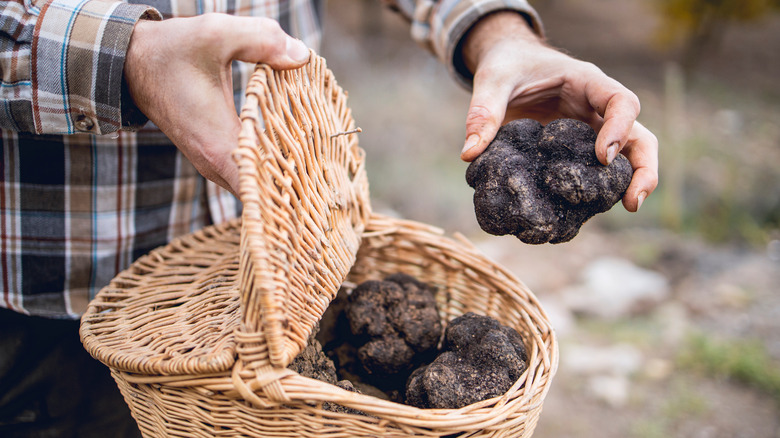Mushrooms Vs Truffles: Everything You Need To Know
Mushrooms and truffles may belong to the same kingdom and have many things in common, but in reality, the two could not be more different. They differ in almost every aspect, including the number of varieties, appearance, and price, but the biggest difference relates to the accessibility and how we use them in the kitchen.
This piece digs underground to discover truffles as one of the most prized culinary gems, but it also covers the more familiar world of mushrooms. Whether you are a professional or a cooking enthusiast, you will want to know why truffles can be mushrooms and why all mushrooms can't be truffles. This piece will give you a deep, detailed overview of the two to help you better understand the obvious and the less evident nuances that separate one from the other. It will also show you how to best use these two in the kitchen and why we should strive to include more mushrooms and truffles in our regular cooking routine. Mushrooms and truffles are some of the most mysterious and enigmatic organisms on Earth, and though we have yet to unlock all their secrets, this is a good starting point to see how the fungi kingdom operates.
What are mushrooms?
Mushrooms are not animals or plants. They belong to the separate fungi kingdom, a large group including other organisms such as yeast, mildew, and mold. For scientists, a large part of this kingdom is still unexplored, but mushrooms are the most popularized and recognizable members of this group.
When we talk about mushrooms, we generally think of the large fruiting bodies, which are the visible part of the organism grown above ground. The mycelium, best described as the mushroom's core or root, is snuggled in the ground or hidden under tree bark and other decomposing materials. These fruiting bodies then further spread spores, enabling another mycelium to form.
We generally use the term mushrooms to denote all the edible varieties, while all those poisonous to humans are mainly referred to as toadstool. Though mushrooms are hugely important and best known for their use in gastronomy, they are also used in medicine and are crucial for the normal functioning of ecosystems. Some mushrooms maintain a symbiotic relationship with the plants and supply the nutrients, but mushrooms are also known as natural recyclers. They help break down organic matter, sending all nutrients back to the soil. The nutrients will then feed other plants, and in that way, the natural recycling system will be completed.
What are truffles?
Truffles belong to the same kingdom as mushrooms, and you will mostly find them referenced as underground mushrooms. However, they belong to the separate Tuberaceae family that includes tuber-like members of the group. They are not related to regular tubers, but the name was inspired by their unique shape and the fact that they grow underground.
The term truffles is generally used for the lumpy fruiting body that develops from mycelium, but unlike mushrooms, this entire process takes place underground. A truffle's body usually forms into an irregularly shaped sphere and can considerably vary in size. Each truffle consists of a rind and a pulp. The rind varies in texture, but is usually rugged and wrinkly, while the inside of the truffle has a distinctive marble-like appearance. The spores, which the truffles use for reproduction, are packed in the pulp. Unlike mushrooms that can easily spread these spores above ground, truffles cannot do the same as they are tucked under soil. That's why they ooze a potent scent that attracts animals that will dig the truffle and help to spread these spores.
Just like mushrooms, truffles cannot produce food by photosynthesis. That's why they always grow around trees and form a symbiotic relationship with the roots. Truffles help the trees to source valuable nutrients, and in return, they are rewarded with sugar, which will aid their development.
Truffles grow underground and are hunted by trained dogs or pigs
As truffles have the unique characteristic of growing underground, they are hidden from plain sight and are very hard for humans to find. Luckily, their potent aroma can break through the soil, and though people still can't detect it, they need to rely on pigs and dogs to do the job for them.
Truffle hunting is a very demanding and specific skill. As truffles are very finicky and rare, the areas suitable for truffle growth are limited. Though animals do most of the digging and point to the exact locations, truffle hunters need to be familiar with the area and know exactly where truffles can potentially grow. Since they need trees to form the symbiotic relationship, truffles pop up around the roots. However, only several varieties, such as oak, beech, and birch, are suitable for symbiosis, which is usually a good indicator for truffle hunters. Additionally, truffles require specific growing conditions, such as a cool climate, optimal soil composition, and ideal humidity, further complicating the process.
The animals also need to undergo extensive training to recognize the truffle aroma and not mistake it for something else. Though pigs were traditionally used in truffle hunting, these days, most hunters rely on dogs as they are less likely to eat the truffles once they find them.
Truffles are uniform in shape and texture, but differ in flavor and aroma
Though there are several visual differences among truffles, best evident in the color and the size, most examples have a similar, distinctively knobby globe-like shape. When you cut into a truffle, they all show a similar interior, streaked with thin lines to make a distinctive marble pattern. Texture-wise, all truffles land somewhere in the middle in hardness, and are generally not overly soft and not too difficult to slice. However, the biggest difference is in the flavor and the aromatic profile, a quality that will influence the demand and the price for every variety.
Though there are many truffle varieties, in the gastronomical context, we generally talk about five or six most popular truffles. The king of the entire group is the legendary white truffle (magnatum), a variety that finds its home in Piedmont and Croatian Istria. Generally, it commands high prices due to its scarcity and the flawless balance between the intensity of flavor and aromas. Black winter truffle (melanosporum), known as French or Périgord, is one of the most popular varieties due to its potent, pleasant flavor and fragrance. Burgundy truffle (uncinatum) or white summer truffle (aestivum) is less aromatic and usually dictates lower prices. Along with European varieties, pretty good truffles have been harvested in Oregon. The market has also been flooded with cheap Chinese truffles that look like the prized winter truffle, but these can't compare in the aromatic complexity.
Mushrooms come in all shapes and sizes that significantly differ in texture and flavor
Mushrooms are one of the most mysterious organisms on Earth. The rough estimate is that we are familiar with only around 1% of all mushroom species. More than 10,000 varieties are known to scientists only in North America, so we are talking about an impressive number of specimens on a world scale. Unlike truffles, mushrooms come in all shapes and sizes, which again vary in texture, aroma, and flavor. All these qualities make them an exceptionally valuable ingredient in the kitchen.
Among the vast group, button and cremini mushrooms are probably the most popular and recognizable varieties loved for their uniform shape, firm texture, and mild flavor. Portobello mushrooms are favored for the wide cap and more chew, while chanterelles win over with the distinctive flavor. Porcini are an all-time favorite, appreciated for their firm texture and deep, earthy nuance, while shiitake and enoki boost up many Asian-inspired dishes. The list of our favorite culinary mushrooms is seemingly endless, and though they are so essentially different, they all share a distinctive umami note that amps up the overall flavor of any recipe.
Many mushrooms are readily available and can be easily cultivated
Mushrooms are a staple ingredient in our diets, and perhaps because we love them so much, they have also become a readily available commodity. We are not talking only about the classics such as button or cremini. Some mushrooms that were once rare or cultivated only in particular regions now grace the shelves of many grocery stores or regularly appear at the local farmer's markets.s
Mushrooms usually grow in the wild, but many can also be cultivated. Most of these fall into the saprophytic category, which includes all mushrooms that grow from decaying matter. Unsurprisingly, the ones that are mostly farmed are the ones you'll commonly find on supermarket shelves, namely button, cremini, and portobello, but oyster and shiitake mushrooms are also standard. Commercial mushroom farming goes back centuries, and these days, mushroom enthusiasts can also get their hands on convenient kits that help them effortlessly grow mushrooms at home.
Truffles are rare, expensive, and difficult to cultivate
Unlike saprophytic mushrooms, parasitic and mycorrhizal mushrooms are difficult or impossible to cultivate. Truffles fall into the mycorrhizal category, which includes all the varieties that establish a symbiotic relationship with the roots of the tree. This relationship is still largely unfamiliar and challenging to recreate, so the cultivation of truffles still remains relatively rare.
Besides the symbiosis with the tree, truffles require specific growing conditions, and they can only grow if all those requirements are fulfilled. In the commercial setting, this means constant monitoring, which doesn't guarantee that truffles will successfully grow. Also, unlike other mushrooms, truffles mature slowly, sometimes taking years to reach maturity, which is a massive challenge for producers. As the aroma and flavor concentrate with age, there is no use in using young truffles with lackluster aromatic profiles.
The complicated harvesting process, incredibly challenging cultivation, seasonality, rarity, and prized status in the culinary world make truffles an extremely desired gourmet delicacy that usually comes with a high price tag. Though the prices vary, you can expect to pay over $1500 per pound for the finest Italian white truffle.
Mushrooms are more versatile in the kitchen
When compared to truffles, regular mushrooms are much more versatile cooking ingredients. As there is such a wide variety of mushrooms available, it seems there are endless variations where you can use them. Mushrooms are always a good idea if you want to add a touch of umami or if you want to get some meat-like textures. Some varieties will turn a dish into an aromatic powerhouse, while others can easily blend and complement other ingredients.
Most mushrooms can be stir-fried or sautéed in a pan, and when paired with a buttery sauce and a sprinkle of garlic or herbs, they make an excellent side dish. Chunkier mushrooms are ideal for grilling. They will soften but not turn into mush, and those earthy qualities will work perfectly with some smokiness. Bigger mushrooms can be stuffed and baked, and firmer ones can go into a soup or slowly roast with meat and veggies. Any mushrooms that slice and cook well can go into risottos or scrambled eggs and easily make an umami-laden pasta sauce. They even go well in sandwiches and on top of pizza, and some are even suitable for raw, carpaccio-like preparation. Mushrooms can literally do it all.
Truffles should only be eaten raw
Unlike regular mushrooms, truffles have limited use in the kitchen, but only a few slices can upgrade any dish to a whole new level. The problem with truffles is that they start to lose their intense aromas immediately after they are harvested. Even without processing, the intensity diminishes. This decline will be much faster if you further expose it to heat. That's why it's always recommended to eat truffles raw or minimally process them in the kitchen.
If you have fresh truffles on hand, keep the dishes minimal and uncomplicated. Real, fresh truffles impart such intensity that any strong-flavored dish might clash with their character. Some classic preparation entails shaving some truffle on top of pasta or scrambled eggs, where shaved truffles act as a garnish and a flavor booster. Generally, truffles agree with something creamy, so you can also shave them on top of a creamy risotto. Cheese, foie gras, steak, and butter are familiar partners with truffles, but even a simple potato will make an excellent foundation for a few slices of this aromatic mushroom. Some truffles can also make a wonderful addition to cheesy sauces or make a surprising element in dessert courses. If you are using it on top of a hot dish, make sure to slice it just before serving, as the heat might affect its quality.
Truffles don't have a long shelf life
Truffles are not only tricky to grow, harvest, and cultivate, but also call for a speedy turnaround as their shelf life is relatively short. This mainly refers to the degradation of quality, and the general rule of thumb is that fresh is always better for most varieties, especially the legendary white truffle. Freshly harvested white truffles will have the most intense aroma, which starts to degrade immediately after the harvest. If the truffle knob is kept waiting too long, the aroma will completely disintegrate, and the aromatic fresh truffle will end up being a flavorless and disappointing experience.
To add to its problematic nature, truffles do not store well. If they can't be used immediately, truffles will last a couple of days — at the latest, up to two weeks for the sturdier black truffle — stored in paper or sealed containers. Excess moisture will ruin the truffle, so freezing is not an option for delicate white truffles as it would soak too much water from the ice crystals. Contact with water needs to be avoided during cleaning. They only call for gentle brushing. Naturally, you do not want to expose them to heat. Perhaps the only storing alternative for truffles is grating and mixing them with butter. Keep the combination in the fridge, and the truffles will last you a little bit longer.
There are numerous ways to preserve mushrooms
Though mushrooms are perhaps not ideal for preservation, there are several acceptable ways to store them and enjoy them out of season. The main prerequisite for any preservation is to use only ripe and healthy mushrooms without any blemishes.
One of the standard preservation methods for mushrooms is canning. Mushrooms can be preserved whole or sliced and easily used for various dishes. If you are canning mushrooms, it is generally not recommended to use wild-harvested varieties. Mushrooms can also be frozen. They must be thoroughly cleaned, and it's best to process them beforehand, either by throwing them for a short blanch in the water or sautéing them until they lose moisture and cook through. Dry mushrooms are one of the best options, but this is usually done on an industrial scale and is suitable only for some varieties. Dried mushrooms need to be soaked in water and then can be added straight to a dish. Lastly, pickling may be the preferred option for mushrooms as the technique allows them to retain their distinct texture, but also helps concentrate most of the flavor.
Both mushrooms and truffles are good sources of nutrients
One thing truffles and other types of mushrooms have in common is that they have a beneficial nutritional profile. Both are nutrient-dense and have few calories but can still provide adequate energy. Mushrooms generally have good nutritional credentials, but the amount of calories and the list of nutrients depend on the type of mushrooms. Roughly speaking, a standard portion of mushrooms will come up to 15 calories, which is minuscule considering that it packs more than 2 grams of protein and almost no fat. It does have over 3.5 grams of carbohydrates, but this only means that a portion of mushroom will fill you up nicely and provide ample energy. Mushrooms also pack many nutrients, such as potassium, selenium, and B vitamins.
Truffles share a similar narrative. The nutritional value again depends on the variety, but truffles are also a good source of fiber and protein while being low in calories and carbohydrates. They also pack some nutrients such as various vitamins, zinc, and selenium. However, the portion sizes are perhaps too small to make any difference, but the greatest asset of truffles is its attractive gourmet potential.
